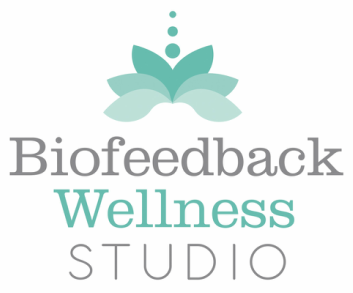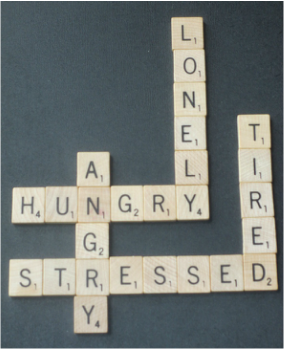Mother Nature’s intricate artwork was a sight to behold, with every tree and shrub in sight coated with the frosty snow. It would have been the perfect day to crawl back in bed, fall asleep and dream of the Winter wonderland. Oops, I mean, the Spring wonderland.
However, the inner voice of the responsible adult homeowner within, prompted me to bundle up and head outside to relieve the drooping branches of their snowy burden.
Shaking the ornamental pear tree in my front yard, I received a “snow shower” as I stood beneath it. I also “received” this word. “Resilience.”
I contemplated the word in relationship to the tree. Resilience. Several years ago, having woken to a similar winter scene, I had gone back to bed rather than listening to my homeowner voice. Later, I was awakened by a cracking noise and woke to see the destruction that a beautiful coating of heavy snow and ice can deliver. Half the pear tree was on the ground with several smaller branches all around.
Later that week I met with three tree experts to discuss what needed to be done. Two of the three stated that the tree would not survive and recommended it be cut down and the stump ground out. The third opinion gave me hope. “Cut it down to ground level. In time, you’ll see new growth.” He suggested nurturing 2-3 of the stronger, more upright shoots. “In a few years, you’ll have your tree back.” He was right! Now, several years later, the pear tree proudly stands approximately 30 feet tall.
Back to Thursday morning. With the wet snow still falling around me, I thanked the tree for its resilience. And began to contemplate resilience and hope in relationship to Covid 19. I recalled the words of Deepak Chopra in his and Oprah’s Desire and Destiny series:
“As our awareness expands, we begin to see the hidden gifts and possibilities in whatever challenge we are facing. With a shift of perception, we can realize that what appeared to be a devastating setback has actually cleared the way for our rebirth and transformation.”
He then used the example of a sequoia tree, whose cones could not break open and release their seeds, without the heat of a forest fire. The fire may be, devastating for some, but it clears an overcrowded forest, allowing seedlings to grow into a sturdy sequoia.
I don’t mean to make light of the destruction we are seeing with Covid 19. Our fears are real. Our concerns are valid. Jobs have been lost, businesses, schools and events are closed and we are urged to confine ourselves in our homes. More importantly precious lives are being lost. More than we could have even imagined. Some of us may have lost a loved one. Our fears are real.
We can acknowledge the feelings we’re experiencing, and utilize tools to manage those feelings and the body’s stress response. For resources, continue reading, and feel free to revisit my previous blogpost for additional links.
Resources for Resiliency
Sounds True's "Resilience in Challenging Times:
A Free Resource of Teachings and Tools."
You can sign up to receive their links here. https://www.soundstrue.com/store/ I especially like Jack Kornfield’s soothing Tree meditation ADD LINK. He invites us to use an image of a sturdy tree to “teach you about your own deep roots and connection to life...to know that you are rooted in this earth.” In listening, I hope you will use it to gain confidence in your own hardiness and resilience.
Sounds True's interview with Michael Singer
Singer (author of “The Untethered Soul” and “Living From a Place of Surrender”) may not be as soothing. In fact, one may feel it as a “kick in the rear” as he urges us to use this Covid 19 experience as practice time for Soul growth. For finding inner peace and connecting deeply with God, the Universe, Spirit, your Higher Self, nature, or whatever/however you might view as a Higher Power.
Using biofeedback and other relaxation tools to calm our physiology will allow us to find that calm place deep inside, despite the chaos around us. My motto, "Calm in the Midst of Chaos."
Protective Factors in our Resilience Toolbox
(from Mammoth Magazine)
I’m a hoarder of documents on my computer, so with a quick search I found this: ADD LINK
https://humanstress.ca/Documents/pdf/Mammouth-Magazine/Mammoth-no13-EN.pdf
I found the entire article interesting, but you may want to scroll to the last page:“Protective Factors in our Resilience Toolbox.” Interesting, that when written, Covid 19 was not a word or concept, yet with a few adjustments, the 9 tips they offer are pertinent.
I've condensed them to seven. Here's my summary, along with my additions:
1. Optimism / Positive reappraisal coping:
-Focus on the positives.
-Journal 3 positive things that happened each day.
-Note 3 things you are grateful for.
2. Use your support systems.
-Stay in touch with family, friends and others who are positive connections. -Allow yourself to ask for help when needed.
3. Give meaning to adversity.
-Seeing the glass as half full rather than half empty.
-While quarantining, use the time to connect with your family or roommates in a deeper way
-Cook together. Try a new recipe.
-Write that book you’ve been thinking of
-Explore an interest you previously didn’t have time for
-Catch up on sleep
-Clean those closets and garage.
-Plant a garden
...the list is endless.
4. Proactive coping mechanisms.
-Make a Plan. Make a Plan B.
-Maintaining a daily schedule may be helpful for some.
5. Effective Self-Regulation skills.
-See my previous blog
-Put together an “emergency box” for managing extreme anxiety.” Yes, a real box or other container. The rational brain can be difficult to access during a panic attack. You may be able to curb the rising panic with the tools in your emergency box. What will you put in your box? It may be an easy to read list of things that have worked before, or it may be actual items. It could even be pictures or drawings of things that are helpful to you. A picture of your breath pacer app, or another app that is soothing. A shower or bath. Your mantra. Placing your hand over your heart or abdomen while slowing the breath. Going for a walk, run or another form of exercise. Calling a friend, family member or self-help hotline (write their numbers on the list in your box). Sing. Hum. Color. Draw. Include a straw that can be used to help you do some slow exhales with pursed lip breathing.
-Make a list on your phone of all the things in your emergency box in case your box is not easily accessible.
-A colleague in the biofeedback field is sending out free, daily messages to help with resilience while dealing with the Covid 19 crisis. Here’s a link if you’d like to sign up: http://drstephensideroff.com/365-steps-on-the-path-to-resilience-and-success/
6. Altruism.
-Reach out and lend a helping hand (while social distancing) or other form of support to someone. This may be within your own family and friend group, or to an individual or organization across the world.
7. Maintain a positive self-concept.
-Recall times in the past when you handled adversity in a positive way.
-Pump yourself up with positive affirmations. Post them on sticky notes around the house. Sing them.
-Send a voice mail, text or email to yourself with a positive message.
-Do a power pose!
Be inspired:
“I was delighted to see that almost all of the ashy ground
(where a wildfire had swept through Rocky Mountain National, destroying 3000 acres)was covered in wildflowers, as well as a large variety
of plants and many new trees.
What was once ugly devastation was now thriving
and would become an even more beautiful forest than before.”
~ Erik Stensland, in his book, Whispers in the Wilderness
She saw every ending as a new beginning. Celebrate her resiliency.
~ Kobi Yamada in the book, “She.”
“A resilient person is more like Batman than Superman,
because resilience is all about adapting rather than being invincible.”
~ Marie Anaunt (possibly paraphrased analogy)






 RSS Feed
RSS Feed